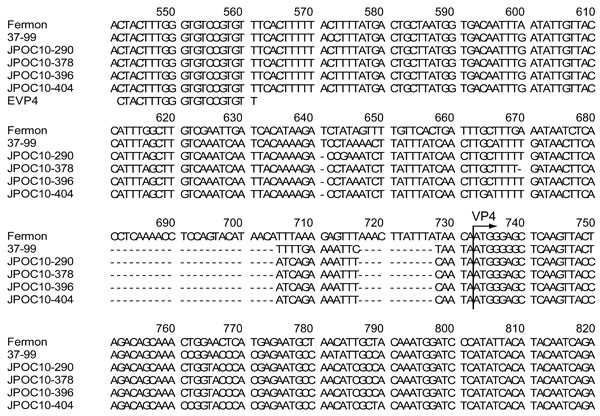Volume 17, Number 8—August 2011
Dispatch
Enterovirus 68 in Children with Acute Respiratory Tract Infections, Osaka, Japan
Figure A1

Figure A1. Nucleotide sequences of 5′ untranslated regions of enterovirus 68 strains, Osaka, Japan, October 2009–October 2010. The strain detected in Osaka showed deletions when compared with Fermon and 37–99 strains. Arrow indicates the start codon (ATG) of the viral protein 4 (VP4) gene. Partial nucleotide sequences (corresponding to nt 541–820 of the Fermon strain) of 5′ untranslated regions of Fermon, 37–99, JPOC10–290, JPOC10–378, JPOC10–396, JPOC10–404, and EVP4 primer were aligned by using BioEdit version 7.09 (www.mbio.ncsu.edu/bioedit/bioedit.html). Hyphens indicate deleted nucleotides.
Page created: August 15, 2011
Page updated: August 15, 2011
Page reviewed: August 15, 2011
The conclusions, findings, and opinions expressed by authors contributing to this journal do not necessarily reflect the official position of the U.S. Department of Health and Human Services, the Public Health Service, the Centers for Disease Control and Prevention, or the authors' affiliated institutions. Use of trade names is for identification only and does not imply endorsement by any of the groups named above.